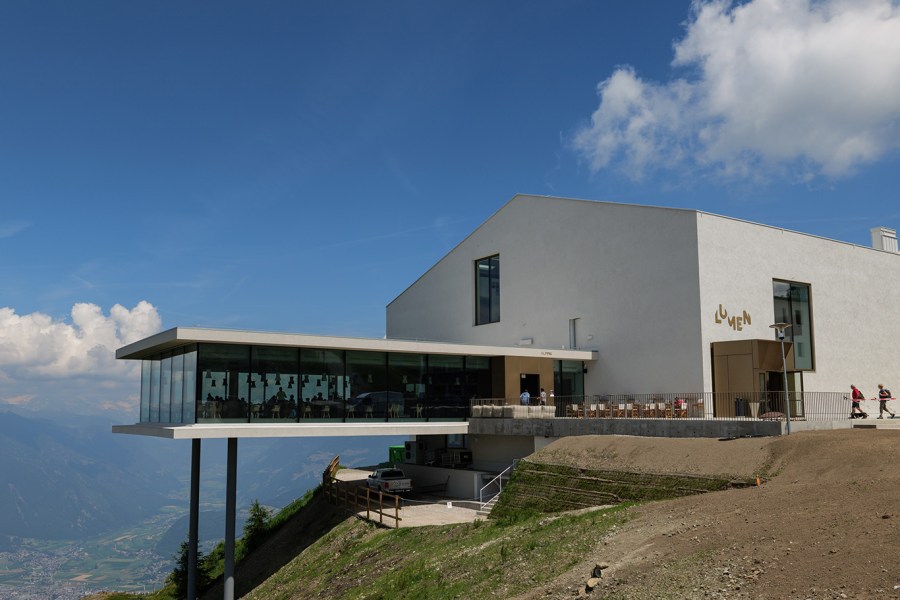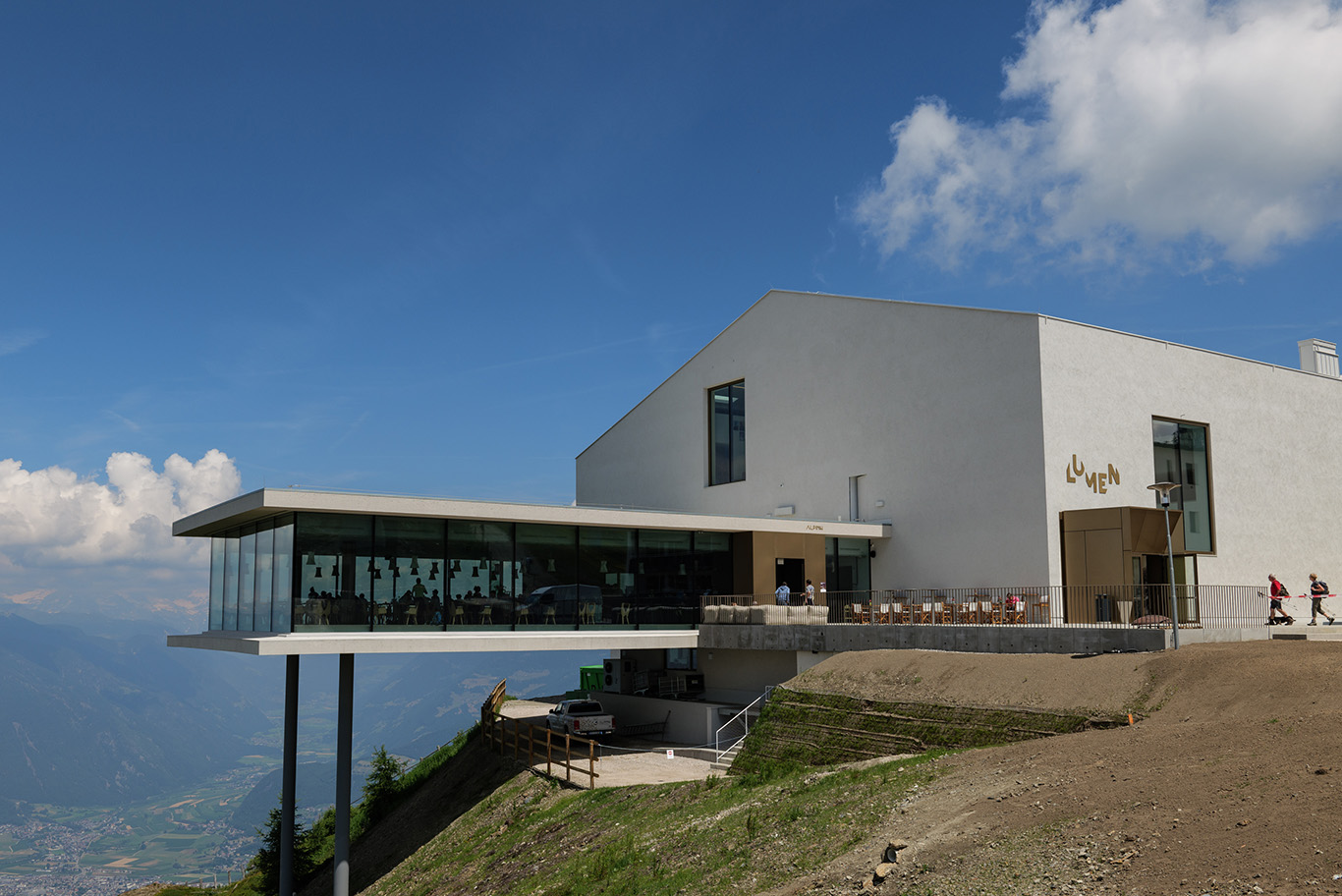
Talk about the many highs of photography – the highest museum dedicated to mountain photography is located at 2275m in the Pustertal Valley, South Tyrol, Italy, and is a must-see attraction for AP readers. The Lumen Museum of Mountain Photography has four floors, where you can explore 1800 square meters of phenomenal mountain photography. You can then step outside and try photographing the breathtaking local views of the Dolomites and Alps yourself, or take action shots of free-falling paragliders, mountain bikers or hikers.
As an outsider to the world of mountain photography, I found my visit to this beautifully designed museum to be very enlightening. There were mountaineers, climbing shots, shots from the summit, images of record, all shot in a documentary way, along with beautifully creative images of mountains in the landscape. It’s also fascinating to see how mountains are perceived by different nationalities or belief systems; places of freedom and leisure, holy places, symbols of ideology, and so on.
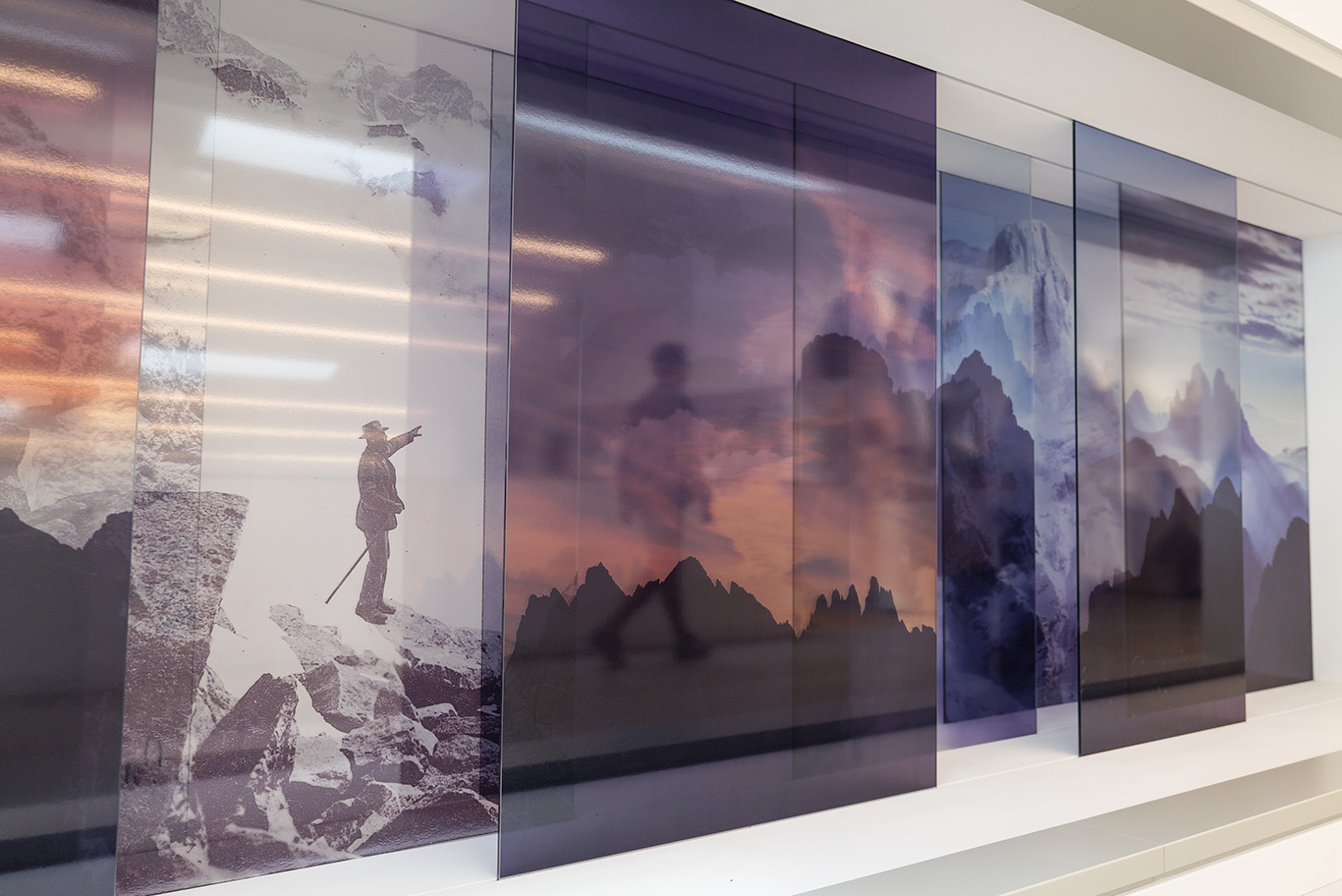
Even the elevator has been creatively designed, with a glass back looking at a giant, four floor Lightbox, showing a journey from the valley to the peak of the mountain. A key section of the museum is dedicated to the changes in photographic technology, starting with the earliest of cameras from 1840 and moving through to digital. I was thrilled to see a darkroom set up, along with three trays showing the steps in the development of a print, all done digitally – so no chemical stains here, just knowledge and experience.
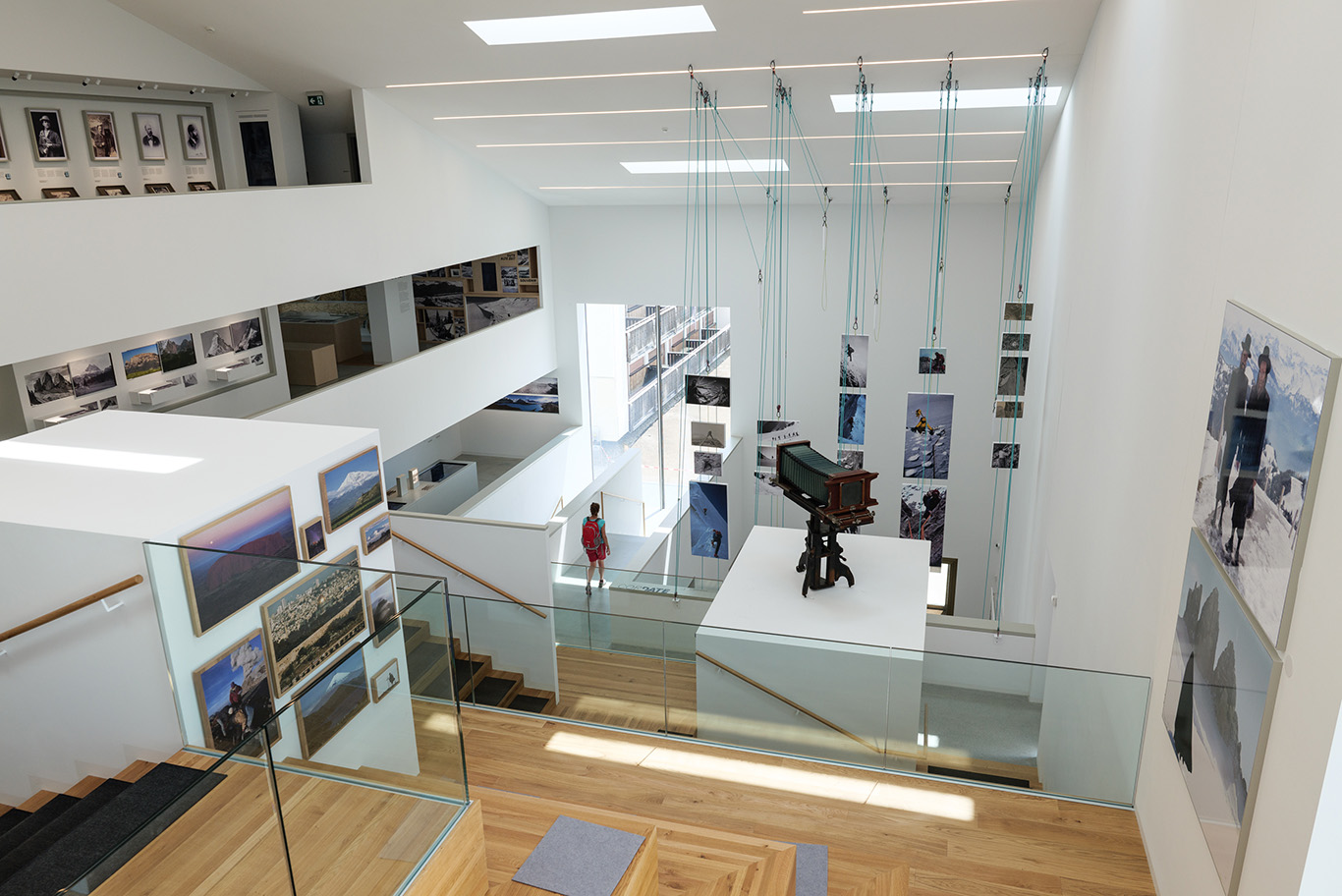
Along with the more traditional prints, the museum is full of innovation. There is everything from VR headsets, allowing the visitor to experience the mountain, through to an audio-visual room showing the thrills of the sport of climbing. One of the most interesting rooms to explore was the Speigelsaal with its mirror walls, floor and ceiling. One huge wall was a screen showing images of mountains, which were then infinitely reflected through the room. Visitors can see each other, or catch their own reflection, defying gravity and hovering over a continuous montage of scenes. This may just be the best location on the planet to take a selfie…
The “Shutter” is a another particularly impressive concept: a huge room with a floor to ceiling, circular focal plane-type shutter which can be open or closed and therefore can be used as a projector screen when closed. When open, it’s a beautiful place to view the nearby mountain ranges and landscapes.
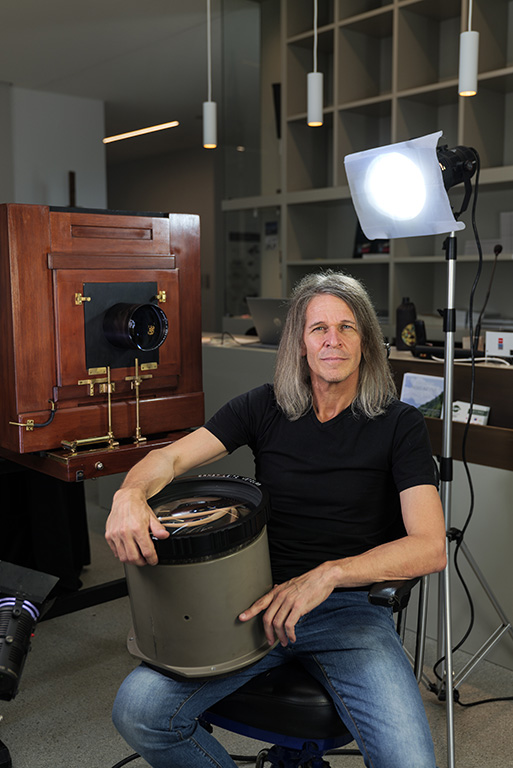
The artist in residence up to December 2019 is Kurt Moser (above), who along with project leader Barbara Holzknecht, forms Lightcatcher. There is a room dedicated to his wonderful ambrotype portraits, a film showing his workflow with this amazing technique as well as a “tiny” large format camera. I say tiny as Kurt’s smallest regular-use camera is a vintage large format Multilith Camera (USA) made in 1907. It features a Charles Beseler Company 18” f.3.6 lens, which when fully extended, measures two meters.
He calls this camera “Baby” and it can create ambrotypes up to 50x60cm. A new camera, the three meter “Lady in Red,” has been purpose-built for Moser’s ongoing project on the Dolomites, a challenging region to photograph. This supports both the square 90×90 cm and horizontal 90×55 cm formats. His next camera will be built into a vintage, six-wheeled Russian military truck. It incorporates an extremely rare Apo Nikkor 1780 mm and Leitz Epis 1000mm f3.5 lens, for photographing landscape images on black glass.
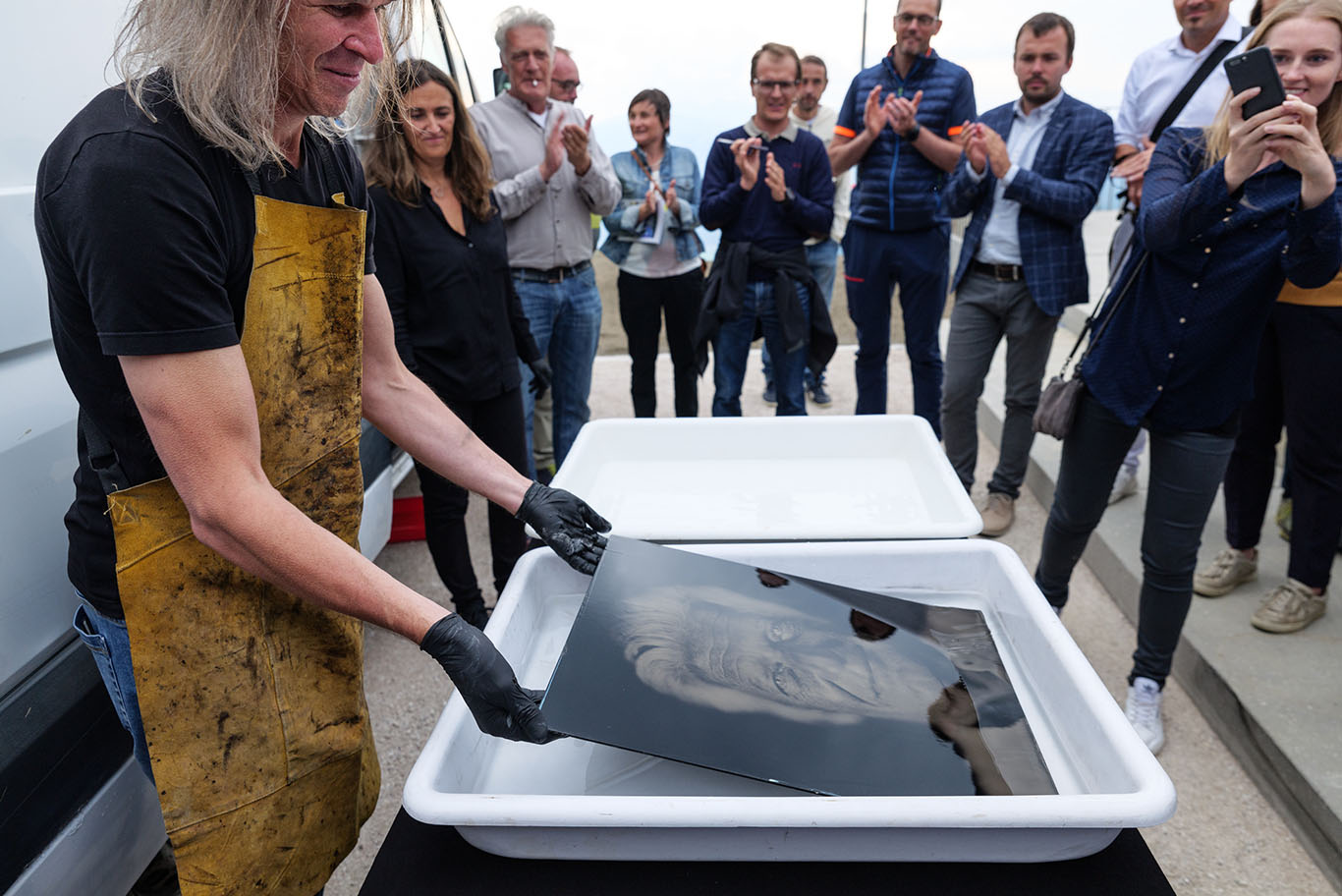
During the inauguration event, Kurt did a live demonstration with Baby, making an ambrotype portrait of television presenter Max Moor (above). The portrait was posed and lit, with the camera then being focused. After this point, the sitter had to remain completely still whilst the team rushed to their mobile darkroom to coat the glass plate with a collodion solution, which is then rendered photosensitive in a silver bath.
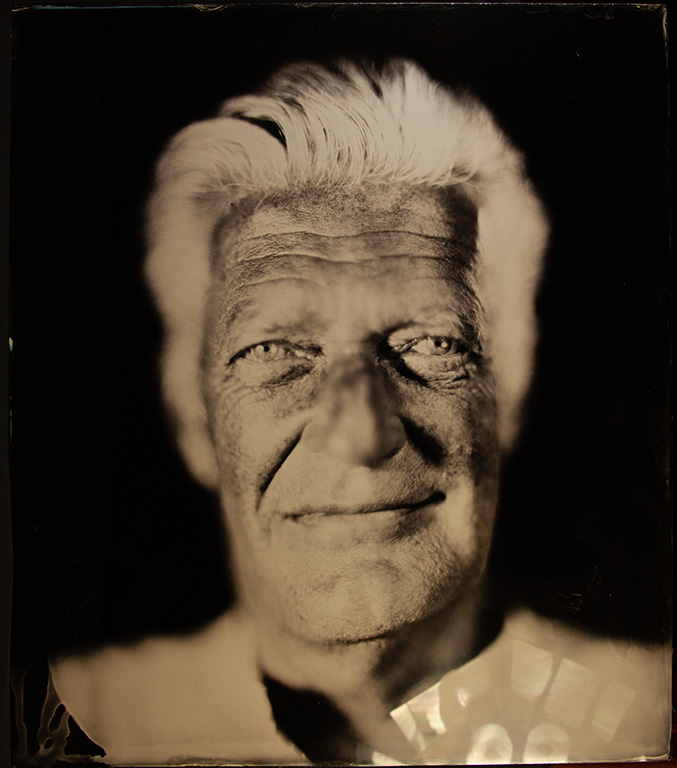
From this point, the plate has a shelf life of only around five minutes, during which it must be processed and fixed. The coated glass plate was then rushed back into the Lumen Museum, placed in the camera and the lens cap was removed, allowing the nine second exposure. The plate was then rushed back into the mobile darkroom and processed, with the fixing stage being done outside the van, to the delight of the gathered crowd.
The Lumen museum’s summer season continues to 13 October, and it is open Monday to Sunday (including public holidays), between 10:00 to 16:00. The last cable car down comes at 17:00. All pictures © Edmond Terakopian 2019

